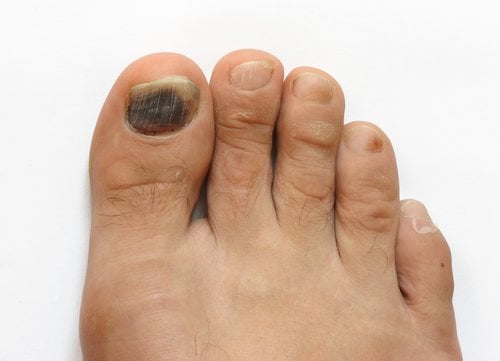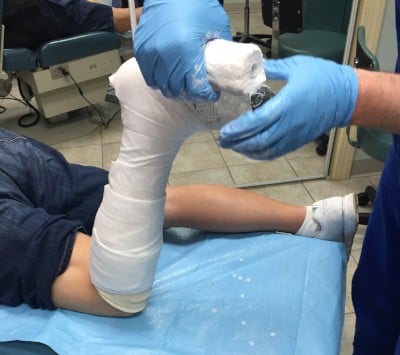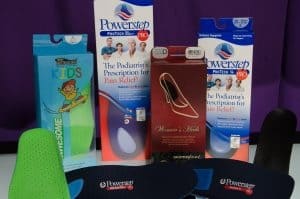Soccer injuries


Soccer injuries
Known as football in most countries, soccer is the most popular sport in the world. In 1994 the World Cup Football Tournament came to America for the first time. In 1999 the women’s team won this prestigious event for the first time, greatly increasing America’s interest in the sport. This trend shows no sign of stopping and is expected to continue, especially among young people.
While still considered a contact sport, it’s certainly less so than others such as basketball and (American) football. By some estimates soccer players are injured 80% less than American football players. It does, however, require lots of running, much of which is full-on sprinting. Soccer also involves plenty of abrupt direction changes and a fair amount of jumping. Kicking, even using correct form, also puts unique stresses on the ankle. In short, soccer unfortunately has a fairly high incidence of lower leg, ankle, and foot injuries.
Ankle Sprain Soccer injuries
Symptoms
- Pain during activities that put strain on the injured ankle bone
- Swelling
- Bruising
- Tenderness
How Can I Be Sure?
You may notice that your mobility is becoming restricted because of pain when you put strain on the ankle injury, and have some bruising and swelling, but a podiatrist will need to properly diagnose you.
Black Toenail Soccer injuries
Foot Fracture and Stress Fractures
Stress fractures: causes, symptoms, and prevention.
Stress fractures were first identified as a distinct injury type by American military doctors in the 1940s. By their estimates, between 5% and 30% of new recruits were developing “hairline” fractures in the feet, ankles, and lower legs. Marching and running long distances almost daily was the obvious cause, which was further complicated by poorly designed footwear. Today, this type of overuse injury occurs much more frequently among professional and amateur athletes who train more than 5 hours a day. They’re particularly common among sprinters, distance runners, gymnasts, and those who play tennis, soccer, volleyball, and basketball. Among these different groups, distance runners and gymnasts are perhaps the most vulnerable.
As noted by these early military doctors, these “hairline” fractures were both very common and often quite painful. The also tended to get progressively worse without prompt treatment. Today, modern doctors have classified stress fractures into two distinct types: insufficiency fractures and fatigue fractures.
Risk Factors
- Factors that could increase your risk of a fracture include:
- Participation in sports that are considered high-risk, such as basketball, gymnastics, tennis, track, and dance
- Increase in intense activity
- Foot problems, such as flat feet or high rigid arches
- Weakened bone conditions, such as osteoporosis
Fractures in the foot or lower leg can be caused by many factors, a few of which are listed below:
- Sports and other athletic injuries
- Overuse
- Tripping and/or falling
- Kicking a hard object
- Accidents
- Repeated stress on the bones
- Stress Fractures
How do football injuries impact players’ long-term health and well-being?
Football injuries can have significant long-term implications on players’ health and well-being. The physical demands and high-impact nature of the sport can lead to various long-term effects:
- Chronic Pain:
Some football injuries can result in chronic pain that persists long after the injury has healed. This can affect players’ quality of life and daily activities.
- Osteoarthritis:
Repeated joint injuries, especially to the knees and ankles, can increase the risk of developing osteoarthritis later in life. This condition can cause joint pain, stiffness, and limited mobility.
- Neurological Effects:
Concussions and head injuries in football have been linked to long-term neurological effects, such as chronic traumatic encephalopathy (CTE) and other cognitive impairments.
- Mental Health:
Injuries and the physical toll of the sport can take a toll on players’ mental health, leading to stress, anxiety, depression, or feelings of loss after retirement.
- Disability and Functionality:
Severe injuries or multiple injuries can lead to long-term disability and reduced functionality, impacting players’ ability to engage in physical activities and daily life.
- Early Retirement:
Some players may be forced to retire early from the sport due to injuries, which can have emotional and financial consequences.
- Substance Abuse:
Injuries and the challenges of recovery may lead some players to turn to substance abuse as a coping mechanism.
Are there specific exercises or training techniques to prevent football injuries?
Yes, there are specific exercises and training techniques that can help prevent football injuries:
- Warm-up:
A dynamic warm-up routine before training or games can increase blood flow, flexibility, and reduce the risk of muscle strains.
- Strength Training:
Focusing on strength training, especially for the lower body, can improve stability and reduce the risk of ligament injuries.
- Plyometrics:
Incorporating plyometric exercises can enhance power and agility, reducing the likelihood of non-contact injuries.
The following is arch supports to treat and prevent injury
How can goalkeepers minimize the risk of hand and wrist injuries?
Goalkeepers in soccer can take several measures to minimize the risk of hand and wrist injuries. Here are some strategies they can employ:
1. Proper technique:
Goalkeepers should focus on developing proper catching and punching techniques. This involves using the correct hand positioning, keeping the wrists firm and aligned with the forearm, and distributing the impact of the ball evenly across the hand and wrist.
2. Wearing goalkeeper gloves:
Goalkeeper gloves provide padding and support to the hands and wrists. Look for gloves with good wrist support and adequate padding in the palm area.
3. Strengthening exercises:
Regularly performing exercises that target the muscles and tendons in the hands and wrists can help build strength and stability. This includes wrist curls, grip strengthening exercises, and finger extension exercises.
4. Warming up and stretching:
Prior to training sessions or games, goalkeepers should engage in a proper warm-up routine that includes dynamic stretching exercises for the hands, wrists, and forearms. This helps increase blood flow and flexibility, reducing the risk of injury.
5. Awareness and positioning:
Goalkeepers should maintain good awareness of their surroundings and position themselves correctly when going for saves or intercepting crosses. By being in the right position and using proper technique, they can avoid awkward hand or wrist positions that may lead to injuries.
How do soccer injuries vary between male and female players?
Soccer injuries can vary between male and female players due to differences in physiological factors, playing styles, and hormonal influences. Studies have shown that female soccer players tend to have a higher risk of anterior cruciate ligament (ACL) injuries, possibly due to differences in lower limb alignment and hormonal fluctuations. Conversely, male players may be more prone to muscle strains and contusions, attributed to higher levels of aggression and physicality in their playing style.
Preventing Soccer Injuries
Training tips and techniques
As with any sport, a good warm up is important to an injury-free soccer experience. Sports medicine experts recommend the following routine:
To ensure you remain safe during your matches, it is important (as coaches should tell you) that you warm-up before each and every game. In case your coach or team does not have a warm-up routine, or you are looking to add to an existing routine, here are some suggestions:
- Cardio: Start things of by running a few laps to get your blood pumping, and your brain prepared for the idea of physical exercise
- Stretching: The idea is to remain limber, and stretching your hips and lower body can help make sure you are performing at your optimal level. This not only means you are more likely to win, but also your muscles and ligaments will be more prepared for the strains and pains you’ll likely experience.
- Passing: Next, work on your technique. Start with short passes then move onto longer drives.
- Shooting: Once you are comfortable making precision passes, aim for goal shots. You want to prepare your body and your mind for the moment when you may be able to score for your team.
- Sprinting: Finally, end your warm-up with some more cardio, but this time you’ll want to do some sprints.
Everyone has their bad days, and it is important for you to know when you are having a bad day. Make sure that if you are not feeling up to the task at hand you sit out and keep healthy. An unhealthy athlete on the field is a liability to not only to your team but also to yourself. Finally, stay hydrated, and make sure that you have a balanced meal hours before so that you can fight off early fatigue.
If you are starting out a new sport or training regimine, we highly suggest you consult with your physician before beginning.
Make an appointment for muscle strains at BVFC
To make an appointment or learn more about muscle strains,bvfc call 878-313-3338





